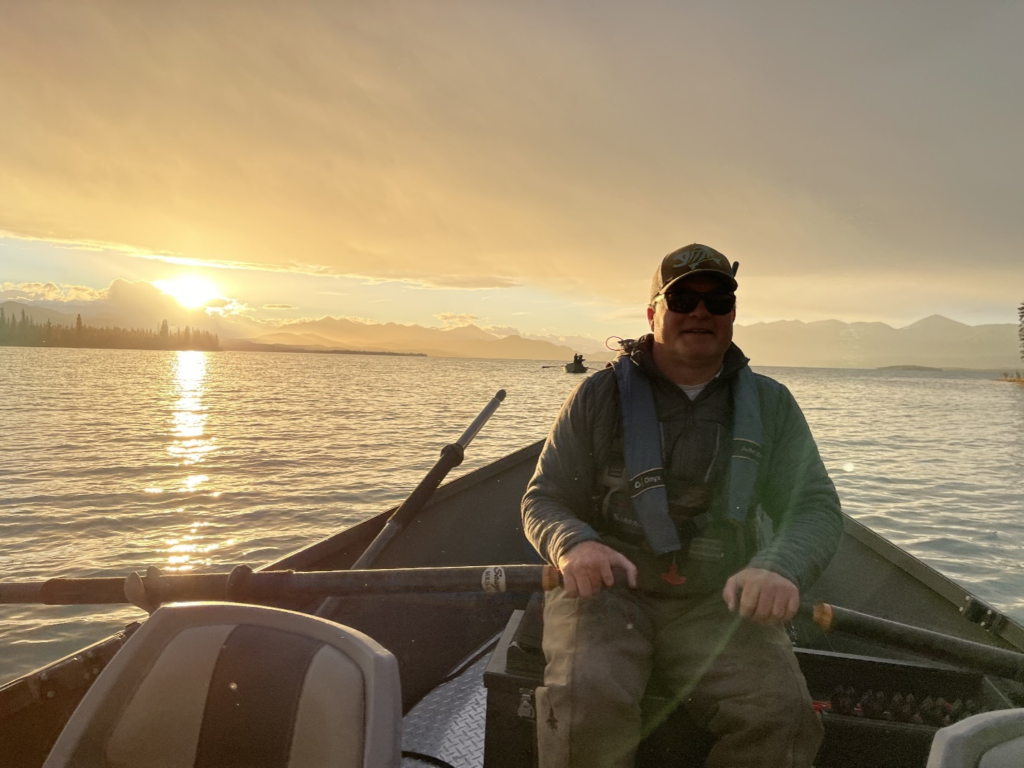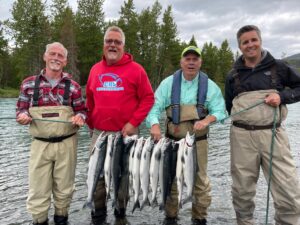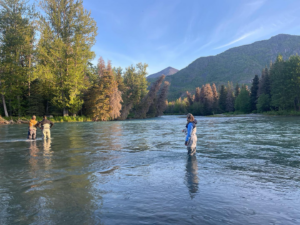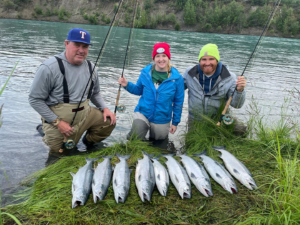The Kenai River, one of Alaska’s most pristine and beautiful waterways, gives anglers an unforgettable fishing experience. If you’re a fishing enthusiast, you’ll enjoy the thrill of reeling in trophy-sized rainbow trout, feisty salmon, and other captivating fish.
However, as with any outdoor adventure, you must prioritize safety.
In this blog, we’ll explore the most important Kenai River fishing safety tips. As you plan your upcoming adventure, keep these practices in mind to guarantee a safe and enjoyable experience on this majestic river.
1. Weather and Water Conditions
Before you embark on your Kenai River fishing trip, check the weather forecast and water conditions. Prepare yourself for a range of temperatures.
Keep an eye out for rain, wind, and even snow (depending on the season). Once you know what to expect, you’ll be able to pack the right clothing and gear accordingly.
Kenai River’s water levels and flows vary depending on rainfall, snowmelt, and dam releases. Keep an eye on the river conditions before your trip. Check online resources like the United States Geological Survey (USGS) or the National Oceanic and Atmospheric Administration (NOAA).
Higher water levels can create more challenging fishing conditions, while lower levels may make certain sections of the river more accessible. Be prepared to adjust your fishing plans based on the current river conditions.
Recommended Read: Prime Time to be on the Kenai
2. Personal Floatation Devices (PFDs)
Personal floatation devices, also known as life jackets or PFDs, are essential safety gear for anyone participating in water-based activities, including fishing on the Kenai River. PFDs provide buoyancy and help keep you afloat in the event of an unexpected water entry, ensuring your safety during your fishing adventure.
Select a PFD appropriate for your size, weight, and intended activity. Look for a PFD that’s US Coast Guard-approved and has a suitable weight capacity for your body weight. The PFD should fit comfortably, allowing for unrestricted movement while casting and reeling.
A PFD with multiple adjustment points will provide the best fit. We also recommend selecting high-visibility colors like bright orange, yellow, and green. These colors are easily spotted by other boaters and rescue personnel in case of an emergency, increasing your chances of being seen and assisted quickly.
Some PFDs come with additional features that can enhance your safety and convenience while fishing. Look for PFDs with built-in whistle, reflective tape, or strobe light attachments, which can aid in signaling for help in emergencies.
Pockets and attachment points for fishing gear (e.g., pliers, line cutters, or fly boxers) can also help keep essential items close at hand. A PFD can only protect you if you’re wearing it. Keep this in mind. Wear your PFD at all times while on or near the water, regardless of your swimming ability.
3. Dress Appropriately
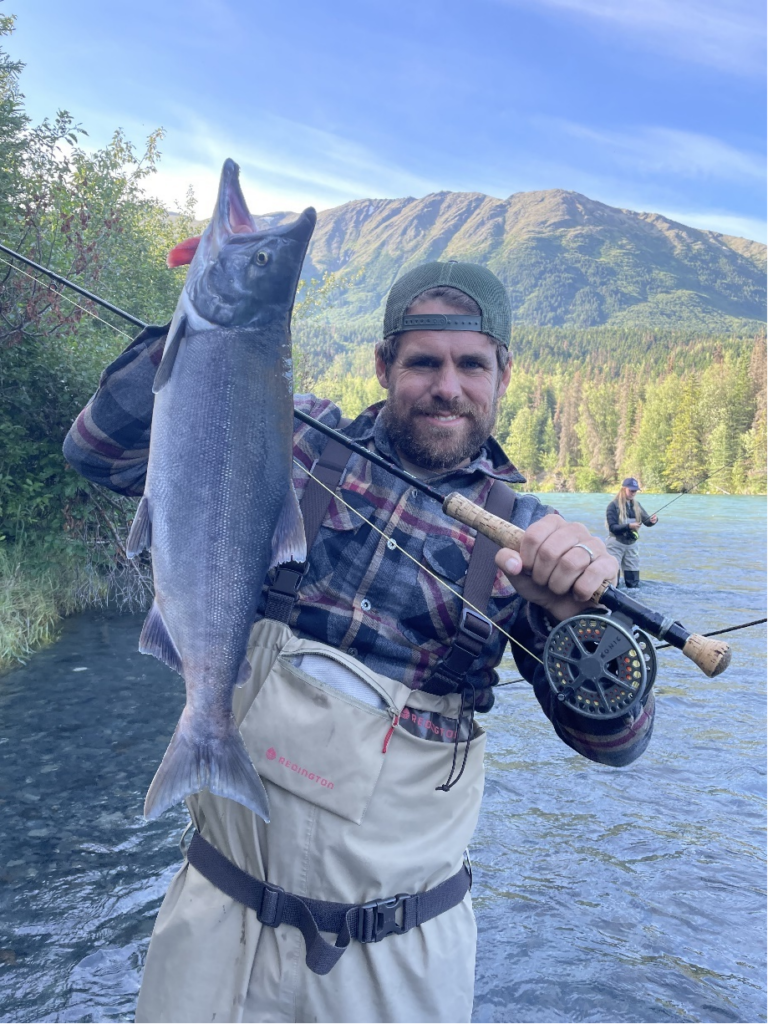
Alaska’s weather can be unpredictable. Proper clothing will keep you warm, dry, comfortable, and safe. Layering is the key to staying warm and comfortable in Alaska’s variable climate.
Start with a moisture-wicking base layer to help regulate your body temperature and wick sweat away from your skin. Add an insulating mid-layer (e.g., fleece or down) for added warmth. Finish with a breathable, waterproof outer layer to protect yourself from wind, rain, and splashes.
Adjust your layers throughout the day as needed to maintain a comfortable temperature. We also recommend investing in high-quality waterproof gear like rain jackets, rain pants, and waterproof boots or waders. Wet clothing can quickly lead to hypothermia, even in relatively mild temperatures. Waterproof gear will keep you dry and warm.
Wear a suitable hat or cap to protect your head from the sun, wind, and cold. In colder weather, choose a warm hat that covers your ears, e.g., a beanie or fleece-lined cap. For sun protection, opt for a wide-brimmed hat or a cap with a neck flap to shield your face, ears, and neck from harmful UV rays.
4. Communication and Emergency Plan
If you want to enjoy a safe and enjoyable Kenai River fishing trip, create a communication and emergency plan. Inform someone about your plans beforehand, including your destination, expected route, and the duration of your trip.
This information will help them notify authorities in case you fail to return as scheduled or if they have concerns about your safety.
Cell phone coverage can be spotty or non-existent in some areas along the Kenai River. Consider carrying a satellite phone, two-way radios, or a personal location beacon (PLB) to stay connected with your group or call for help in case of an emergency.
Familiarize yourself with the local emergency numbers and procedures in the area where you’ll be fishing. In case of an emergency, you should know who to call and which information to provide.
Lastly, make sure you thoroughly research the area where you’ll be fishing. You should be aware of any local hazards like wildlife, swift currents, or hazardous weather conditions. Knowing what to expect and how to respond to potential dangers will help keep you and your group safe.
5. Be Bear Aware
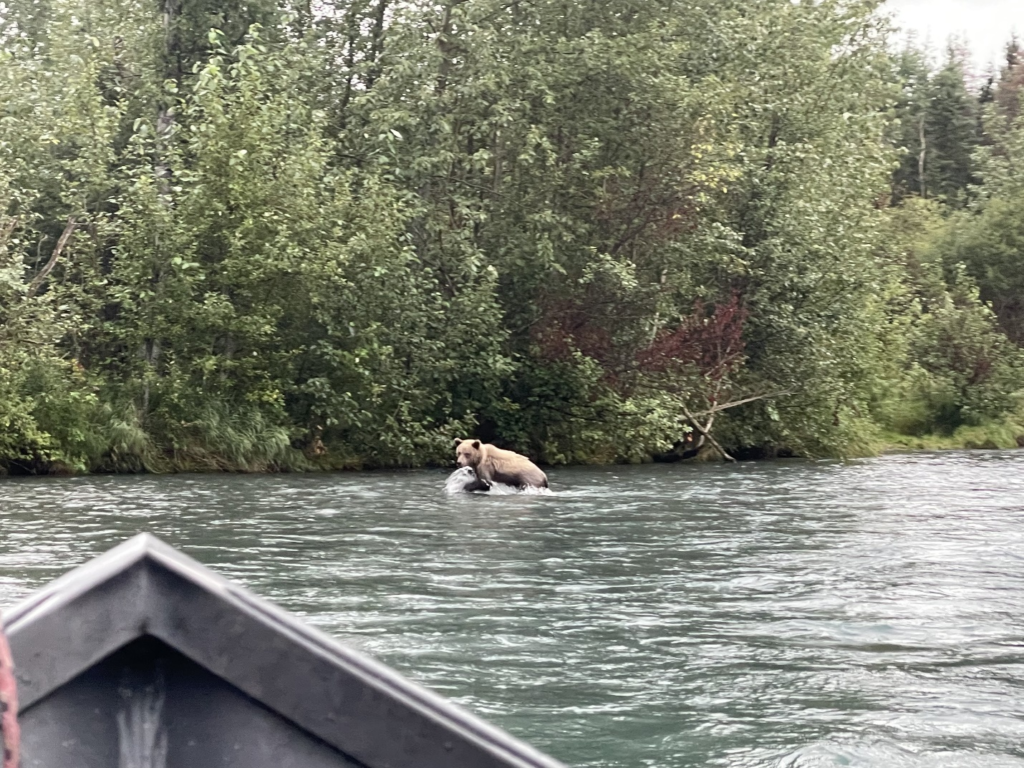
Bear spray is a highly effective deterrent in case of a bear encounter. Make sure you have a can of EPA-approved bear spray ready to use. You should also know the right way to use it. Take some time to read the instructions and practice removing the safety clip beforehand. This will help you get comfortable with its operation before you have to use it urgently.
Bears are less likely to approach groups of people. Fishing with friends or booking a guided trip with a Kenai River fishing guide is a great way to minimize the risk of a bear encounter or stay safe should you see one.
Your Kenai River Adventure Is Right Around the Corner!
Are you excited about your upcoming fishing excursion? If you’re looking for an experienced, skilled, and knowledgeable guide, Jason’s Guide Service should be your first stop.
Whether you’re interested in salmon fishing, rainbow trout fishing, or Dolly Varden fishing, we’ll make sure you have a delightful time.
Book now! It’s time to explore the wonderful opportunities the Kenai River has to offer. If you have any questions, our team is always happy to help.

